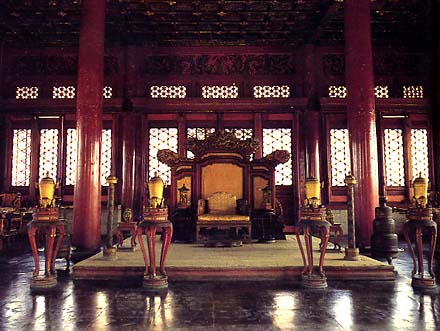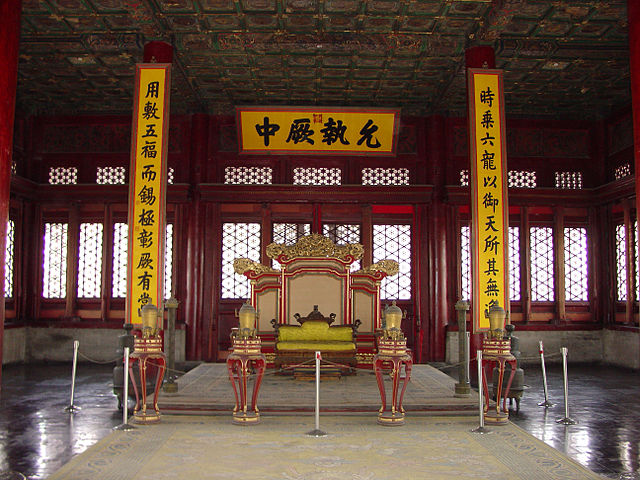
1995 (Photo: China Esperanto Press)

2006 (author's photo)

1995 (Photo: China Esperanto Press) |

2006 (author's photo) |
Forbidden City, Beijing (map)
Its modest throne, set on a low platform, proves that this hall would not have been used for grand public ceremonies. But nor could it have been purely "private," given its formal presentation of the throne and incense burners. The hall's formal yet modest arrangement reinforces the idea of a "staging area" introduced on the previous page. Here the emperor, although fully embedded in his public role, would not have been "on show" to his subjects.
Several interesting changes can be seen between 1995 and the 2006 refurbishment. Most obvious is the new signage. The throne itself has been replaced, in a style similar to the throne in the Hall of Preserving Harmony (the style of the 1995 throne resembles Cixi's throne in the Palace of Gathering Elegance). The screen behind the throne has been renewed, and a carpet has been added in front of the platform. Finally, a new coat of paint was applied, and various furnishings (most notably, the pedestaled incense burners) rearranged.
According to Brown, p. 9, the red paint of the interior of these throne rooms originally consisted of a mixture of tung oil, clay, hemp, and pig's blood.

|

|

|